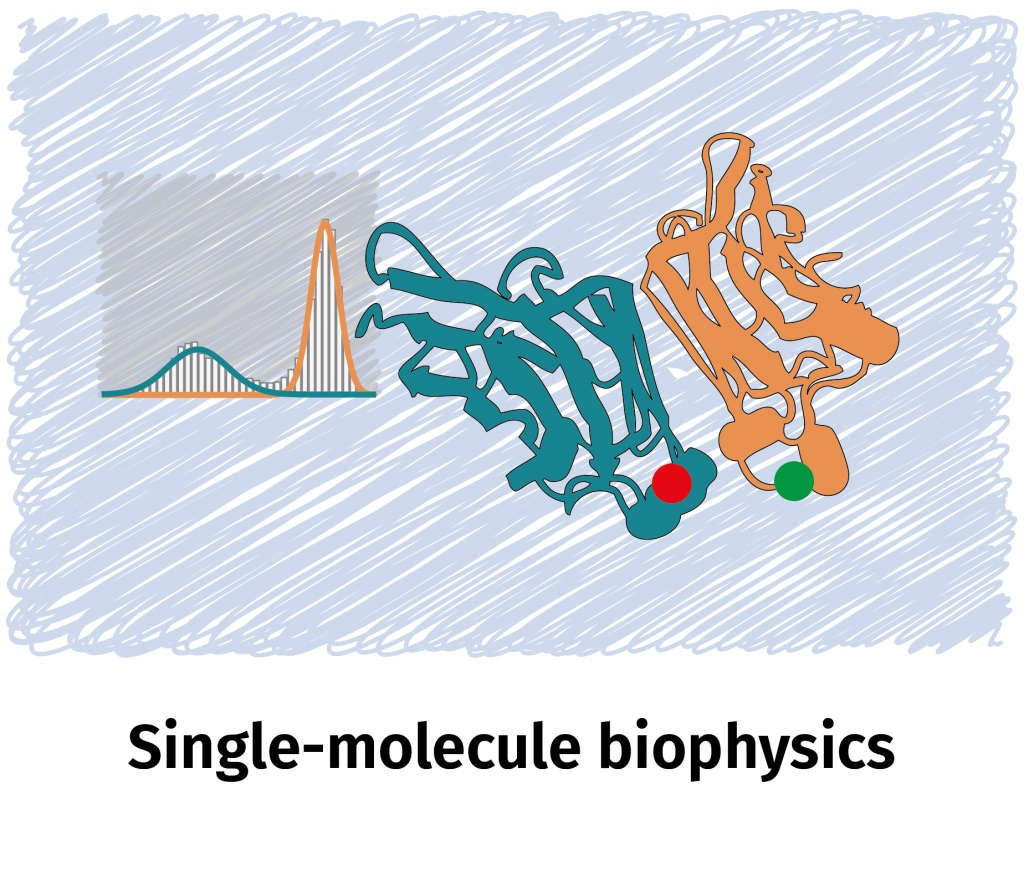

| Office | 089/2180-77547 (Frau Steger) |
| Telephone | 089/2180-77537 |
| Room | E1.003 |
| merve.kesici”at” cup.lmu.de |

Publications
Alan M. Szalai; Giovanni Ferrari; Lars Richter; Jakob Hartmann; Merve-Zeynep Kesici; Bosong Ji; Kush Coshic; Martin R. J. Dagleish; Annika Jaeger; Aleksei Aksimentiev; Ingrid Tessmer; Izabela Kamińska; Andrés M. Vera; Philip Tinnefeld
Single-molecule dynamic structuralbiology with vertically arranged DNA on afluorescence microscope Journal Article
In: Nature Methods, 2024.
@article{Szalai2024,
title = {Single-molecule dynamic structuralbiology with vertically arranged DNA on afluorescence microscope},
author = {Alan M. Szalai and Giovanni Ferrari and Lars Richter and Jakob Hartmann and Merve-Zeynep Kesici and Bosong Ji and Kush Coshic and Martin R. J. Dagleish and Annika Jaeger and Aleksei Aksimentiev and Ingrid Tessmer and Izabela Kamińska and Andrés M. Vera and Philip Tinnefeld},
url = {https://rdcu.be/dZyyO },
doi = {https://doi.org/10.1038/s41592-024-02498-x},
year = {2024},
date = {2024-11-08},
urldate = {2024-11-08},
journal = {Nature Methods},
keywords = {},
pubstate = {published},
tppubtype = {article}
}
Merve-Zeynep Kesici; Philip Tinnefeld; Andrés Manuel Vera
A simple and general approach to generate photoactivatable DNA processing enzymes Journal Article
In: Nucleic Acids Res, 2021, ISSN: 1362-4962.
@article{pmid34904657,
title = {A simple and general approach to generate photoactivatable DNA processing enzymes},
author = {Merve-Zeynep Kesici and Philip Tinnefeld and Andrés Manuel Vera},
doi = {10.1093/nar/gkab1212},
issn = {1362-4962},
year = {2021},
date = {2021-12-01},
urldate = {2021-12-01},
journal = {Nucleic Acids Res},
abstract = {DNA processing enzymes, such as DNA polymerases and endonucleases, have found many applications in biotechnology, molecular diagnostics, and synthetic biology, among others. The development of enzymes with controllable activity, such as hot-start or light-activatable versions, has boosted their applications and improved the sensitivity and specificity of the existing ones. However, current approaches to produce controllable enzymes are experimentally demanding to develop and case-specific. Here, we introduce a simple and general method to design light-start DNA processing enzymes. In order to prove its versatility, we applied our method to three DNA polymerases commonly used in biotechnology, including the Phi29 (mesophilic), Taq, and Pfu polymerases, and one restriction enzyme. Light-start enzymes showed suppressed polymerase, exonuclease, and endonuclease activity until they were re-activated by an UV pulse. Finally, we applied our enzymes to common molecular biology assays and showed comparable performance to commercial hot-start enzymes.},
keywords = {},
pubstate = {published},
tppubtype = {article}
}
DNA processing enzymes, such as DNA polymerases and endonucleases, have found many applications in biotechnology, molecular diagnostics, and synthetic biology, among others. The development of enzymes with controllable activity, such as hot-start or light-activatable versions, has boosted their applications and improved the sensitivity and specificity of the existing ones. However, current approaches to produce controllable enzymes are experimentally demanding to develop and case-specific. Here, we introduce a simple and general method to design light-start DNA processing enzymes. In order to prove its versatility, we applied our method to three DNA polymerases commonly used in biotechnology, including the Phi29 (mesophilic), Taq, and Pfu polymerases, and one restriction enzyme. Light-start enzymes showed suppressed polymerase, exonuclease, and endonuclease activity until they were re-activated by an UV pulse. Finally, we applied our enzymes to common molecular biology assays and showed comparable performance to commercial hot-start enzymes.